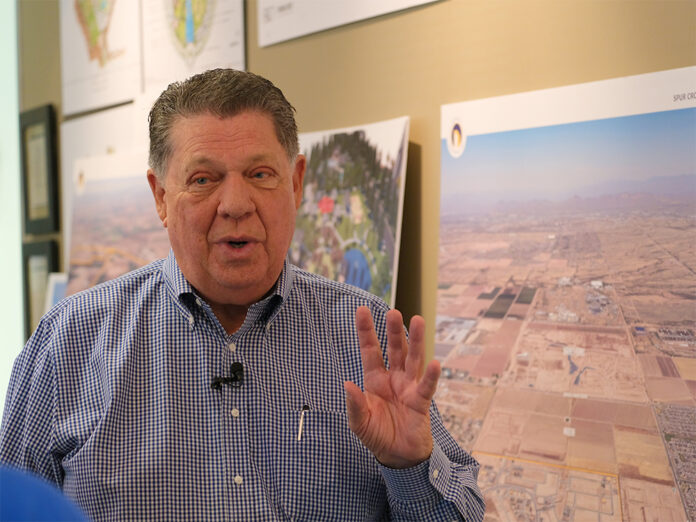
Mike Ingram is not crazy or stupid.
That may be obvious to observers now, but 25 years ago, many of Arizona’s most knowledgeable movers and shakers thought he was nuts. Now the chairman of El Dorado Holdings, which he founded in 1992, Ingram became one of the most influential people forming the modern history of Maricopa.
After creating Rancho El Dorado and sister subdivisions The Villages and the Lakes, El Dorado Holdings still has about 8,000 acres in and around Maricopa set for residential and commercial development. It has thousands more acres in other communities it is also developing.
But Maricopa continues to be his baby. The work has been a combination of puzzle pieces and chess moves to find the right combination of partners and investors in what others thought was a hair-brained scheme.
“I had this vision and plan for a new city there,” said Ingram, 76. “At the time, we had entitlements through Pinal County. There was no City of Maricopa. Maricopa was less than 500 people.”
His first deal in real estate was with partner Marty Ortman, with whom he purchased El Dorado, a ranch formerly belonging to John Wayne near Stanfield. That gave their fledgling company its name. Then they purchased other farms in the vicinity in 1992 and became known to other landowners.
He still clearly remembers the day Karl Eller called and asked him to lunch at the Phoenix Country Club. Eller was an advertising mogul and John Wayne fan who had purchased the Red River Ranch in 1980 from the late actor’s estate.
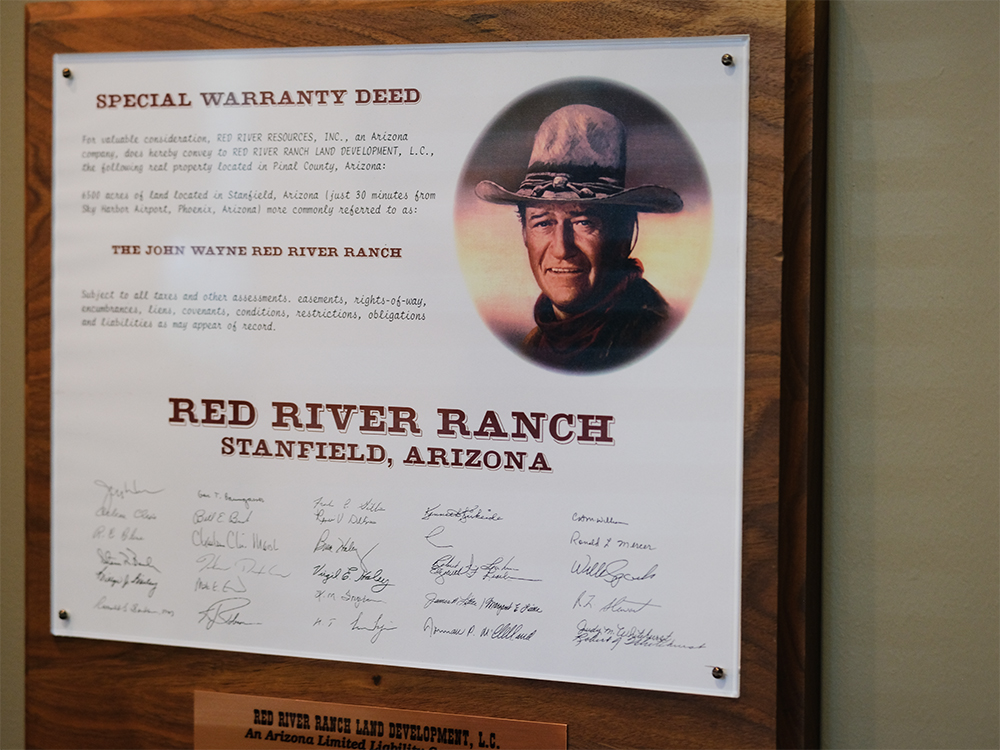
“I need you to think about buying the Red River from me,” Eller told Ingram. “But I need you to close it in a week.”
Eller had a loan with a local savings and loan company that had collapsed and been taken over by the federal government. He made a deal with Resolution Trust Company, the government’s asset management company, to pay off the loan. Time was running short. He offered Ingram a fair price.
“So, we bought the Red River in ’92, and we still own a big part of the Red River today,” Ingram said. “I had a love for John Wayne my whole life. When we bought El Dorado ranch, I was real excited to be a part of that deal, the Louis Johnson and John Wayne history behind it and what that means to the whole community down there. And preserving that history, you just don’t have any idea what that means to me.”
When El Dorado Holdings had Red River in escrow, Ingram received a call from Louis Johnson, Wayne’s long-time business partner in Maricopa whose property was in the middle of Red River. Johnson said he wanted to be a partner in Ingram’s real estate plans and set him up with Willard Sparks, one of the largest commodity traders in the nation.
Another partner, Dr. James Little, became one of Ingram’s best friends.
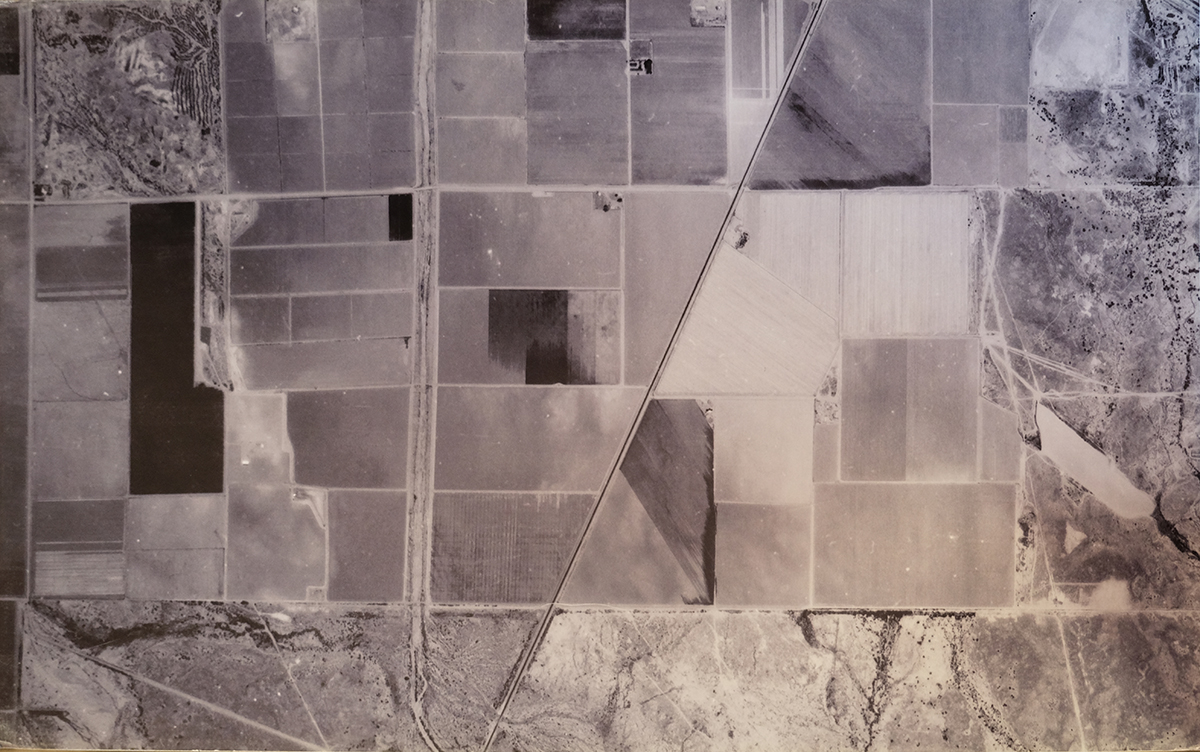
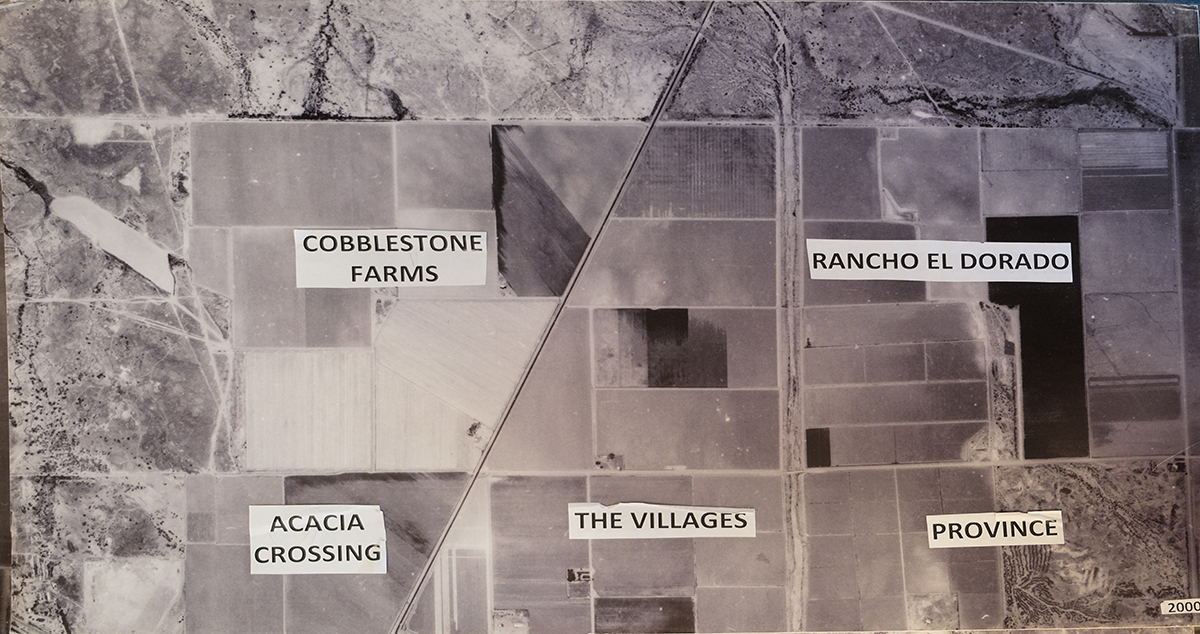
IT STARTED WITH A ROAD
When Ingram began buying farmland around Maricopa, some local residents thought he could be key to solving a serious problem – Maricopa Road. Community leaders like Alma Farrell, Jane Askew and Ann Donithan were hosting meetings in their homes to get property owners on board with widening the deadly, two-lane strip.
Leading farmers Bill Scott and John Smith reached out to Ingram, getting the ball rolling for the Maricopa Road Association.
“He recognized that we needed to have a four-lane highway coming out here,” Smith said. “So, we got together and posted a bond issue. We knew that the county wouldn’t help finance it. So, we voted on it, and it just barely passed.”
In 1989, Arizona Department of Transportation was ready to accept the road if the association could raise half the money.
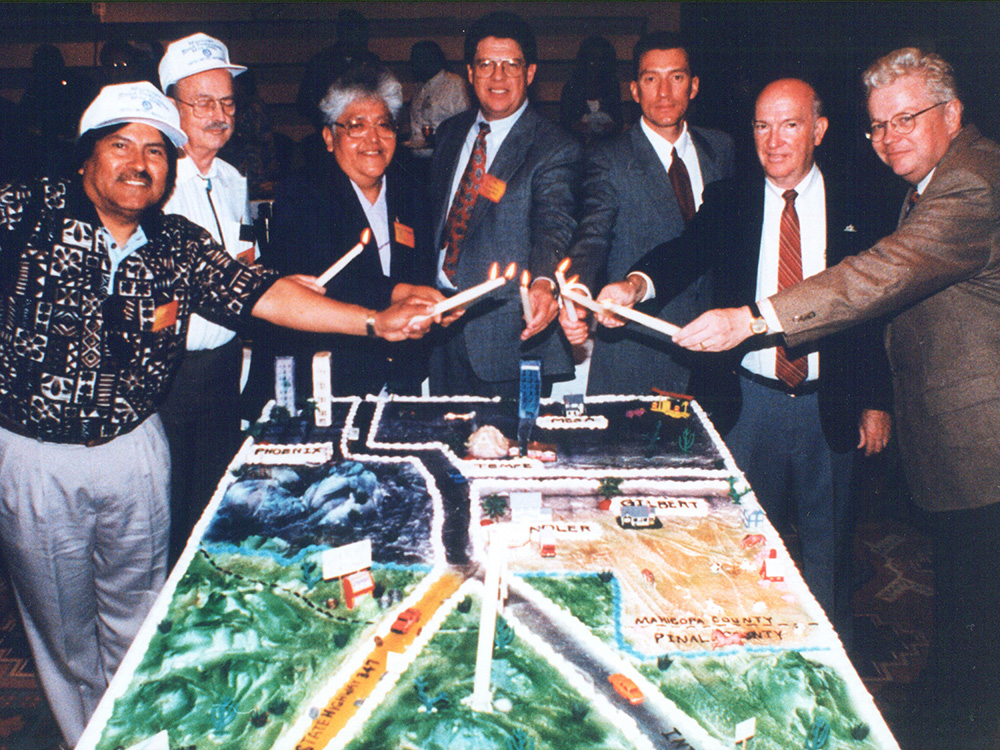
“The citizens of western Pinal County all had a big, big part in making that happen,” Ingram said. “Alma Farrell was a big part of that. She had many, many meetings, actually gave me a place at Headquarters to work out of in those days. In a room between the bar and the restaurant, that was my little office there in Maricopa. And we went to work on it.”
U.S. Sen. Dennis DeConcini brought federal money to the table. Pinal and Maricopa counties also came on board. Gila River Indian Community was in agreement. Property owners around Maricopa voted to tax themselves for the improvement district.
“Mike worked hard, a lot harder than I did,” Smith said.
In tragic irony, Jane Askew, who had been a passionate voice in widening the dangerous roadway, was killed in a crash on that very road in 1990. The main park in Rancho El Dorado is named in her honor.
The widening of the section of Maricopa Road newly named State Route 347 was completed in 1996.
Despite naysayers calling it a road to nowhere, Ingram knew it was vital to his plans. He started piecing together his properties, buying farmland from Smith and others.
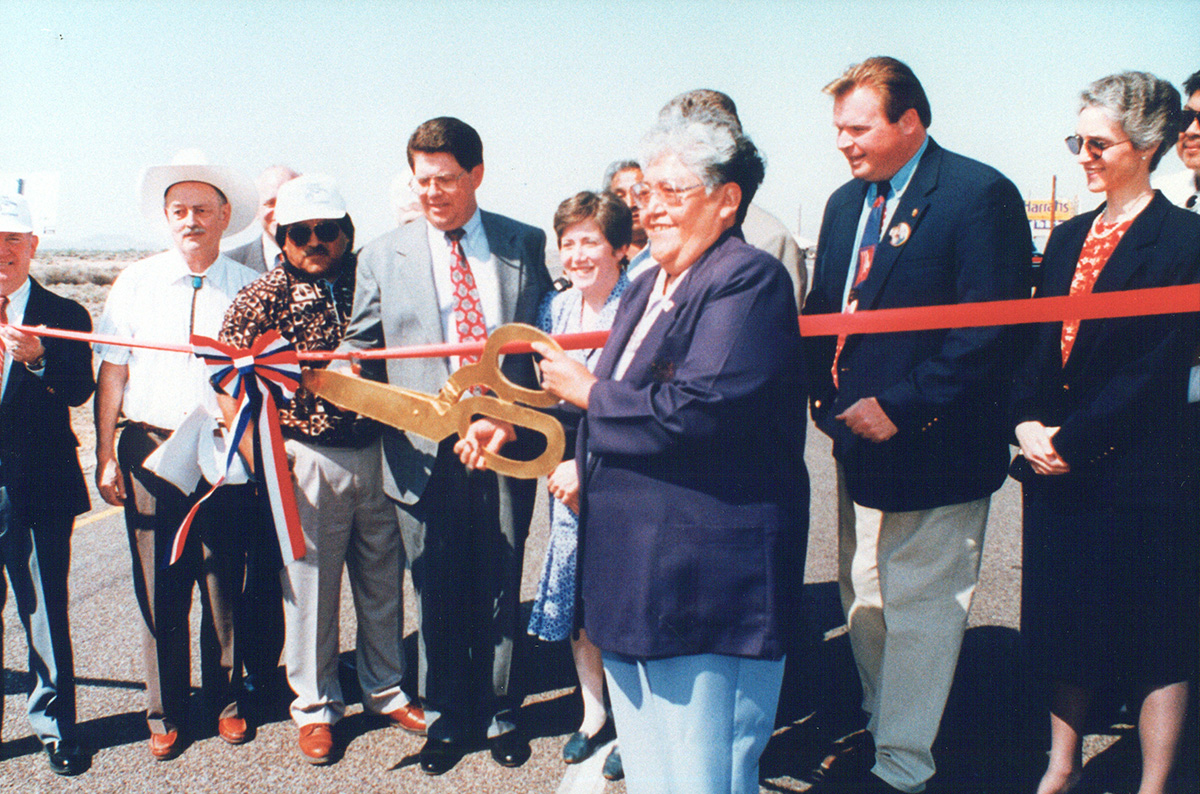
THE NEED TO BELIEVE
Ingram knew he still needed a powerful real estate broker to bring in homebuilders. Each one he called in Phoenix shot him down, telling him Maricopa would just be a bunch of mobile homes.
“In those days, all the interest was on Casa Grande,” he said. “I went to every broker in town and showed them my idea. And every broker except one said, ‘Mike, you’re absolutely crazy. You’ll never sell one lot. You’ll never sell one home until Casa Grande is completely built out. Do you not understand that Casa Grande has doctors, they have shopping centers, they have car dealers, they have dentists? You have a Circle K and Headquarters, and NAPA was there.’”
The one broker who listened was someone Ingram did not want to approach in the first place. James “Nate” Nathan of Nathan & Associates, brokered some of the biggest deals in the state, including Johnson Ranch, Power Ranch and Copper Mountain Ranch in Casa Grande. Ingram saw him as a major competitor.
Nathan listened because he saw what Ingram saw: tiny Maricopa’s proximity to the East Valley and Sky Harbor.
“You could tell growth patterns,” Nathan said. “He said, ‘I can’t list this with you because you’re going to take the people to those other places.’ I said, ‘No, I’m not. It’s an emerging market.’”
In 2000, Nathan and his partner David Mullard took the first phase of 1,000 lots and sold to three homebuilders. It took them just 10 weeks.
Nathan said a top selling point was the newly widened road where before there was no safe access.
“The affordability in the southeast Valley was going away, just like it is again, and so Maricopa exploded,” Nathan said.
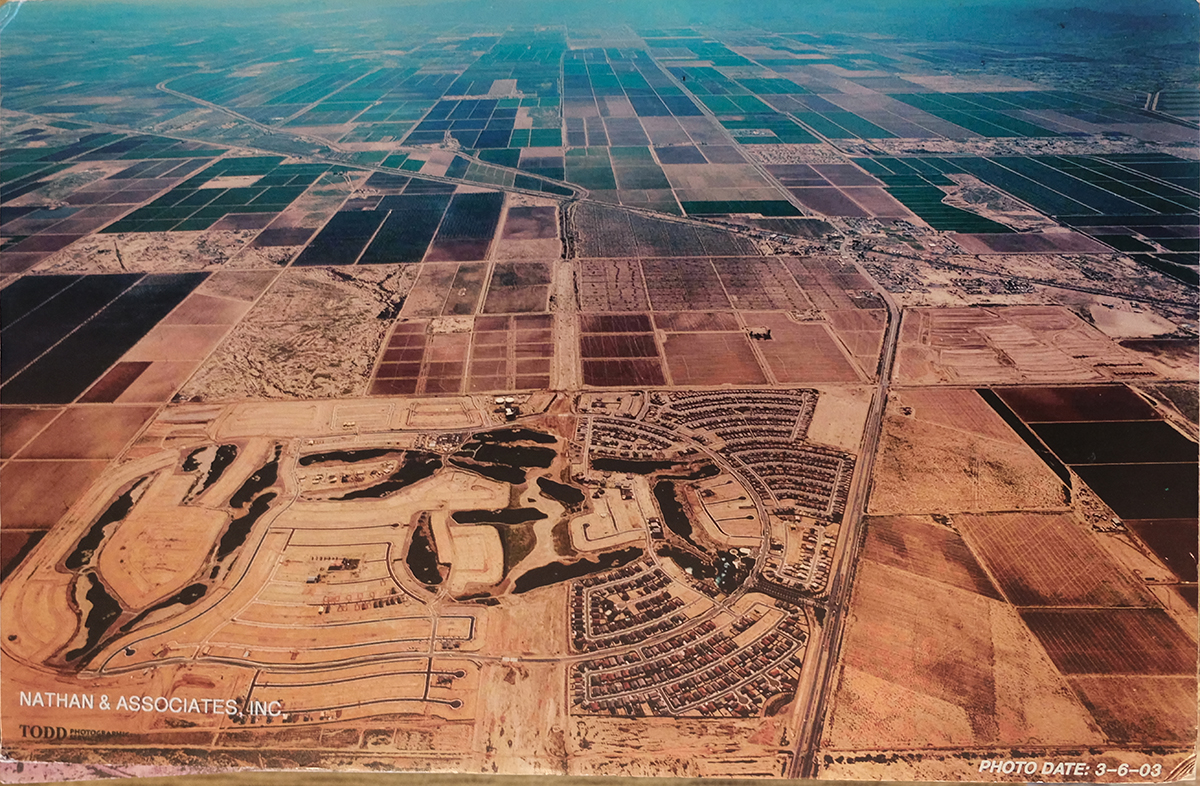
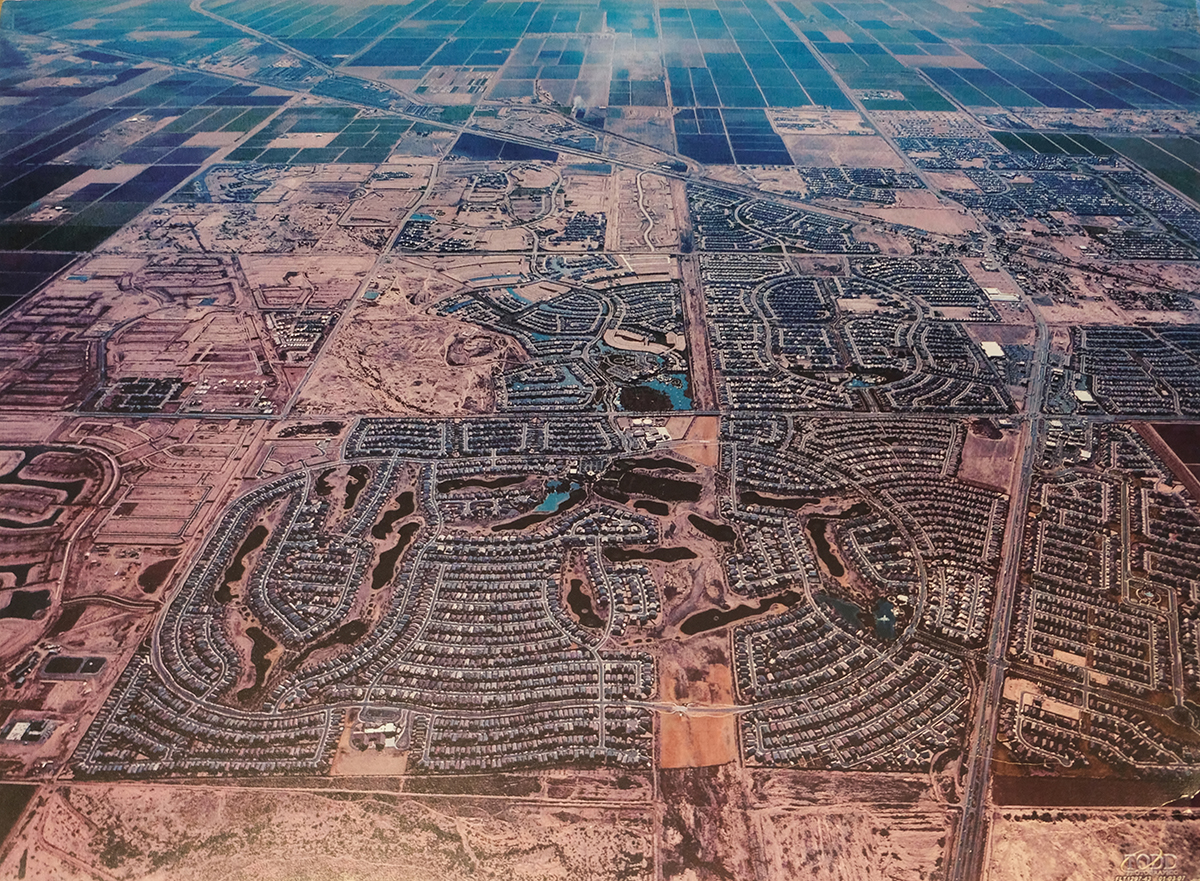
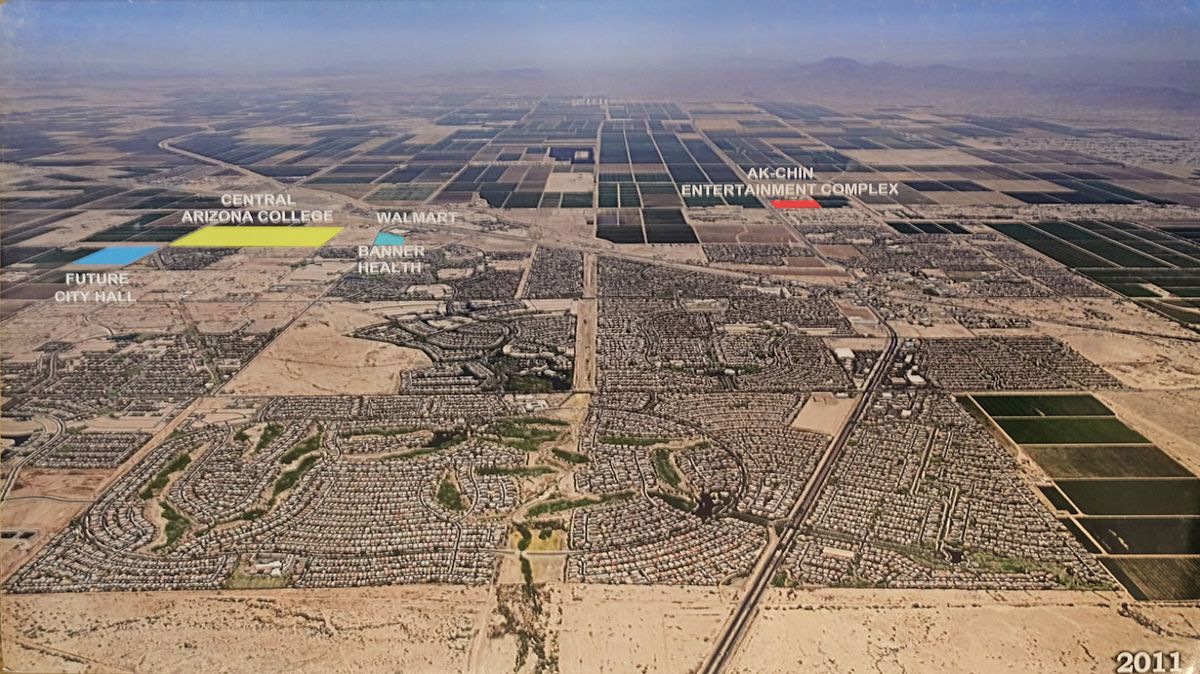
Many homebuilders wanted to go cheap, building homes with car ports and swamp coolers, roof-mounted air conditioners and composition roofs instead of tile.
“Mike was like, ‘No, I’m creating a whole new city,’” Nathan said. “We went with the builders that Mike believed would build the quality product that he demanded. He never wavered from that once.”
Ingram said if he had settled for the county standards, he wouldn’t have put in curbs and sidewalks and could have chip-sealed the roads. He said Maricopa would look like Arizona City today. Instead, he wanted standards like those in municipalities like Chandler and Gilbert. At Nathan’s insistence, the homebuilders agreed.
Ingram was spending $14 million on The Duke golf course and another $3 million on landscaping for phase 1 of Rancho El Dorado and wanted quality homes to go with it. With no impact fees at the time, homebuyers could get an 1,800-square-foot home for what they would pay for a 1,300-square-foot home in Chandler.
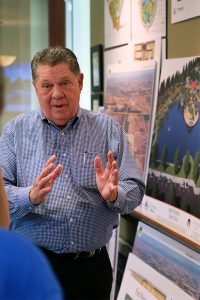
The homebuilders were just the first hurdle. Utilities had no interest in coming to Maricopa.
When he had 1,103 lots in escrow with five homebuilders, Ingram went hunting for a water company. He went to Atlanta, Minneapolis, Los Angeles and Dallas.
“Nobody would put in a water company or wastewater,” he said. “So, we put in the water and the wastewater.”
Eventually Global Water agreed to take over most of Maricopa’s water system, inheriting those early lines.
Ingram asked Cox to provide cable service. That was another no-go from a company that did not believe Maricopa would be a success. Then Ingram found Orbitel and talked its principals into being a partner in the venture.
“Orbitel was certainly one my favorite projects of all time,” said Rick Anderson, a partner in Orbitel at the time. “Mike’s group had a great vision for Maricopa. I have never witnessed anything like growth in the early days of Maricopa.”
Anderson said when he was asked to pull something together after Cox passed on the opportunity, he was impressed with the developers.
“I found the Rancho El Dorado group very straight forward in their approach to forming a partnership that formed the foundation for the success of Orbitel,” he said.
Current President John Schurz said the founders of Orbitel “believed in the City of Maricopa and its residents. There is a ‘Can Do’ spirit that permeates throughout the community. And, like Mike Ingram, Orbitel saw the potential in Maricopa.”
Then Ingram received back-to-back doses of bad news.
“The darkest day of my whole life was the day Arizona Public Service told me they wouldn’t bring me electricity,” he said. “Qwest said they wouldn’t bring fiber optics.”
Electrical District No. 3 was serving farmers in the area with hydroelectric power. Ingram saw they did not have the capital or the know-how to bring thousands of homes online. So, he flew to California to convince Edison Power to partner with ED3 on a new utility company.
“About that time Qwest called, after they saw the utility formed, and they said, ‘We’re on our way with fiber optics,’” Ingram said.
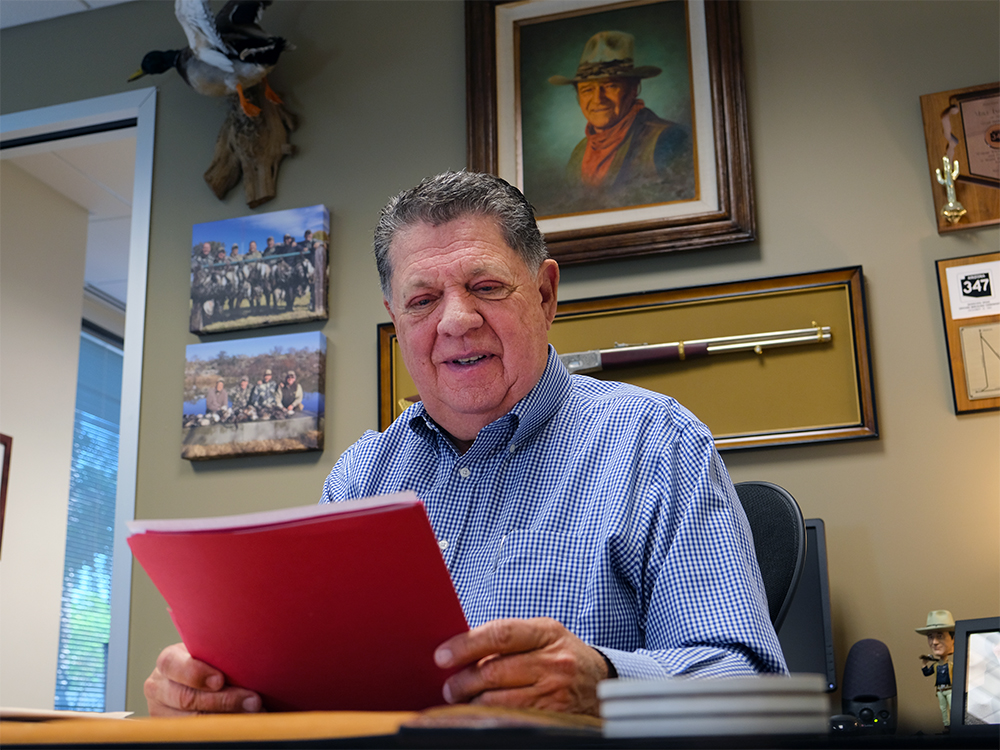
KEEPING THE FAITH
Looking back, it might have been easy for Ingram to quit trying to open so many closed doors.
“People didn’t believe in it. I would go to these meetings at these restaurants, and people would say I was the craziest man in the world,” he said. “We built this four-lane divided highway and thought we could build a town down there. I was absolutely the laughingstock of the real estate community.”
But he had a far stronger incentive than ego keeping him fighting for his idea. Taking pride in operating his real estate company since 1987 with no debt, he had a lot invested in Maricopa.
“I have a lot of my very best friends and myself committed. We have a lot of money invested in land in western Pinal County,” he said. “There is no option. It has to work. It has to go. I have too many people that trust me. There was no turn-back.”
Those who believed in what El Dorado Holdings was doing included Eddie Basha, then-CEO of Bashas’, the first supermarket in town; Norman McClelland of Shamrock Foods; Larry Williams, an investor from Boise, Idaho; and Ingram’s biggest investor, ophthalmologist Jim Little.
“These guys were all in my LLCs,” Ingram said. “I could be replaced at any time.”
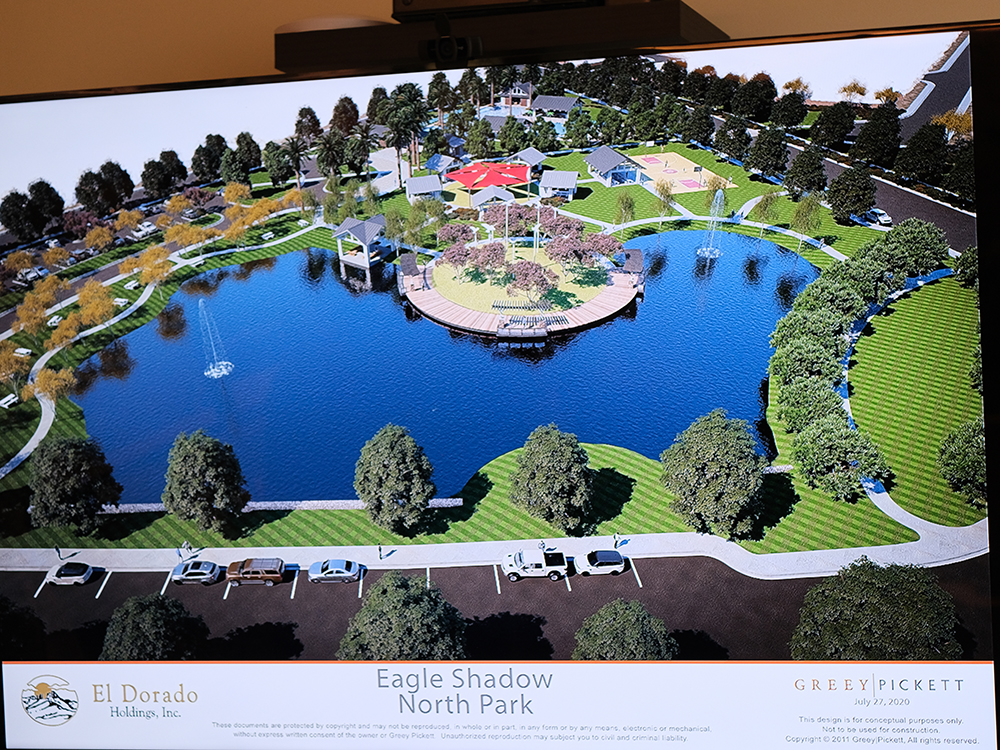
DOWNS AND UPS
 Though the company had stopped buying land by 2005, El Dorado Holdings was gearing up to launch another master-planned community on the east side of Maricopa called Eagle Shadow in 2007.
Though the company had stopped buying land by 2005, El Dorado Holdings was gearing up to launch another master-planned community on the east side of Maricopa called Eagle Shadow in 2007.
“It’s taken a lot longer because we had to go through a recession we didn’t expect,” he said.
The bubble burst on the housing market in Maricopa, in Arizona and across the country. At El Dorado Holdings, everything came to a dead stop. Through 2007 the company had sold 57,000 lots in Pinal and Maricopa counties. Then, from 2008 to 2018, they did not sell one lot.
For 10 years, Ingram told his employees there would be no raises or bonuses. Their Christmas bonus was a letter guaranteeing them 12 months of employment. Scary times, but he had quality people.
“We never laid off one person,” he said. “These people hung with us. They stayed with us through the recession.”
“Mike’s an incredibly smart land player, an incredibly passionate master developer and basically the most incredible thing about him is he has no debt,” Nathan said, “as opposed to everyone else in ’06, ’07, ’08, ’09, ‘10, ‘11. They had a lot of debt, so a lot of things changed hands. If you don’t have debt and you entitle your ground and you get it ready for when things recover, that’s when you capitalize, and that’s exactly what Mike did.”
The company started buying land again in 2012 for 10% of what it would have cost in 2005. Ingram said his degree in agricultural economics convinced him all commodities go through cycles. He and his partners began putting back together the plans for Eagle Shadow in Maricopa and Douglas Ranch in Buckeye.
“Now we have 1,127 lots ready to go to escrow with the builders all lined up,” he said. “We today manage about 64,000 acres of land that is zoned and entitled. In and around the town of Maricopa, we’ve got about 8,000 acres of land that’s still yet to be developed.”
HOW IT STARTED
Mike Ingram was raised in Roswell, New Mexico. His father, Paul, died of cancer when Ingram was 13. With little formal education his mother, Maude, owned and operated the Navajo Motel in Roswell. He worked at the motel and picked up jobs around town.
He attended one year at Pasadena College, which is now Point Loma Nazarene, in San Diego, where he had too good a time and made straight C’s. The dean encouraged him to follow his aptitude in agricultural economics, elsewhere. He attended Texas Tech for a year, met and married a sheriff’s daughter his sophomore year and moved to New Mexico State in Las Cruces to complete his degree.
He landed a job in a meat-packing plant in Colorado, then moved into sales with a position at Merck & Co. He called it “a great, great training ground for one of the largest pharmaceutical companies in the nation.”
With a growing family, he started his own company with financial backing from John Tufts Sr., who had offered him a partnership in his veterinary supply company. Ingram became a wholesale distributor for Merck, Pfizer and other major pharmaceutical companies in Oklahoma. He dealt in agriculture veterinary supplies for 15 years. He grew the company to over $100 million in sales.
He studied entrepreneurs and was inspired by, and later befriended by, motivational writer and speaker Zig Ziglar, as he moved from one company to another field altogether in the mid-1980s.
“Oil had gone from $40 a barrel to $8,” Ingram said. “From ’84 to ’86, 62 banks went under in the state of Oklahoma. Without a bank, without a credit line, I sold my business for pennies on the dollar.”
He headed off to Arizona in 1985, essentially broke and trying to reinvent his livelihood. He started real estate dealings as wife Sheila and her mother later packed up and moved their belongings by U-Haul to Ahwatukee. Starting with designated broker Deb Bricker, he put together a team of loyal, hard-working individuals and turned his eyes south of the Valley.
“Zig saw Maricopa before we ever started. He didn’t believe that would ever amount to anything,” Ingram said. “After he saw the great success it was, he said, ‘Mike, you gotta write a book.’”
He did, with “The Master Plan” in 2012 explaining his philosophy of interpersonal relationships in business. After he received the national Horatio Alger Award in 2019, the book was republished this year.
Ingram isn’t just watching the revitalized growth of Maricopa; he is part of it. Besides Eagle Shadow, El Dorado Holdings has REV in the wings, a residential/commercial property on the southeast corner of Porter and Bowlin roads.
“We do business in a lot of communities, and you don’t find what you do in Maricopa,” Ingram said. “They have very high standards. We want them to have high standards. One of the reasons Maricopa is coming back is the reputation it has in the development community to be agreeable to work with developers and homebuilders, and they listen.”
He lays credit for that at the feet of City Manager Rick Horst – “one of the best problem-solvers that I know of” – and an attitude of not opposing developers.
“To this day, we’re still trying to get a big employer down there,” he said. “It’s going to come. It’s going to come.”
Horatio Alger Association video
________________________________________________________
This story appear in part in the October issue of InMaricopa magazine.





![City gave new manager big low-interest home loan City Manager Ben Bitter speaks during a Chamber of Commerce event at Global Water Resources on April 11, 2024. Bitter discussed the current state of economic development in Maricopa, as well as hinting at lowering property tax rates again. [Monica D. Spencer]](https://www.inmaricopa.com/wp-content/uploads/2024/04/spencer-041124-ben-bitter-chamber-property-taxes-web-218x150.jpg)

![3 things to know about the new city budget Vice Mayor Amber Liermann and Councilmember Eric Goettl review parts of the city's 2024 operational budget with Mayor Nancy Smith on April 24, 2024. [Monica D. Spencer]](https://www.inmaricopa.com/wp-content/uploads/2024/04/spencer-042424-preliminary-budget-meeting-web-218x150.jpg)




![Alleged car thief released without charges Phoenix police stop a stolen vehicle on April 20, 2024. [Facebook]](https://www.inmaricopa.com/wp-content/uploads/2024/04/IMG_5040-218x150.jpg)




